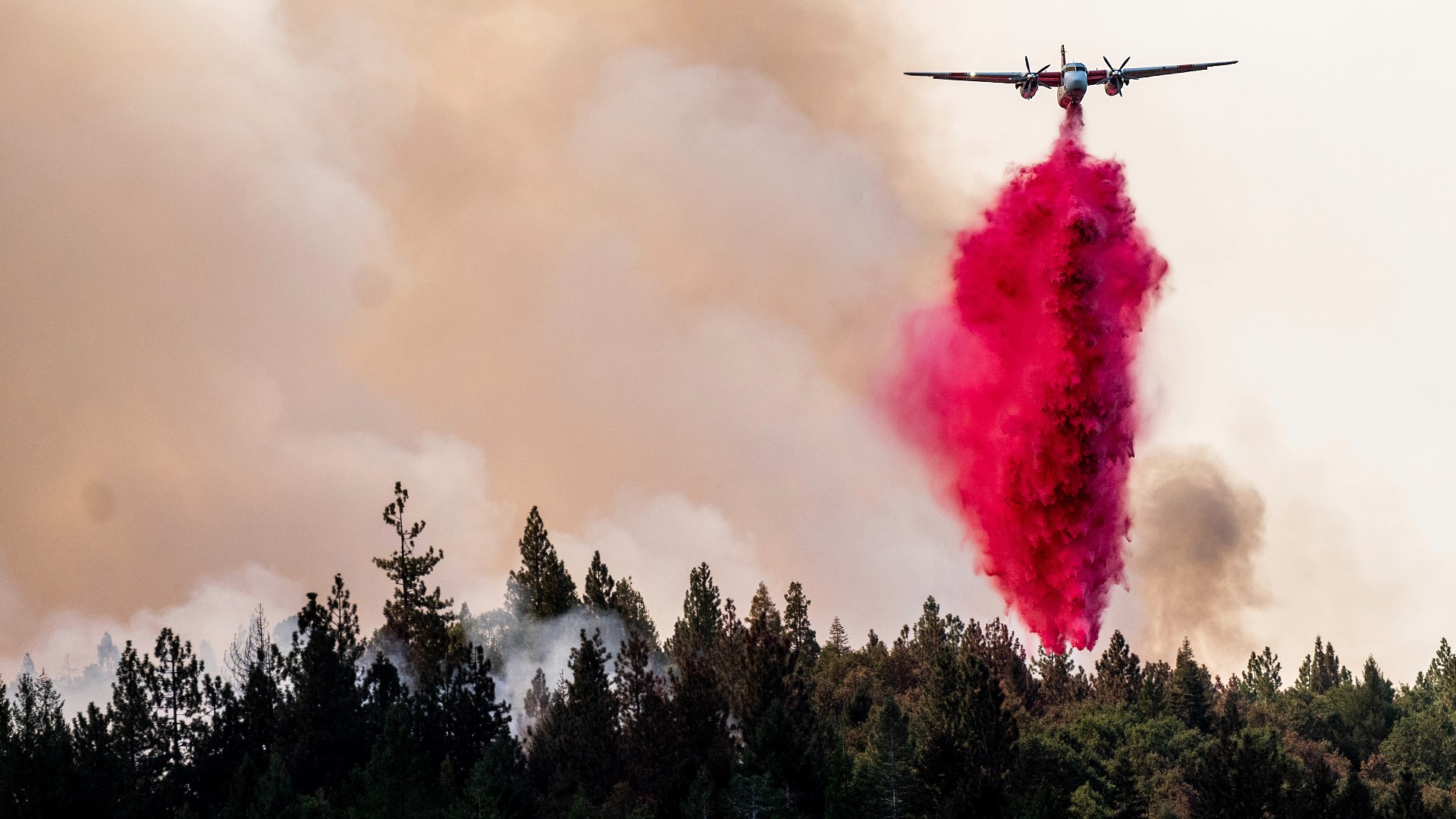CALIFORNIA, USA — While it might feel like winter in May, fire season is around the corner.
However, one of the tools that keep people safe is being criticized and is also facing a lawsuit.
A federal lawsuit in Montana is trying to stop the U.S. Forest Service from dropping retardant. It could reshape how the agency battles wildfires throughout the West.
"If we stop using it and we don't have a viable alternative, then we're going to increase the severity of wildfires, because it's going to be more difficult for us to corral them," said Ronald Tjeerdema, professor of Environmental Toxicology at UC Davis.
Environmentalists raised concerns about waterways being polluted with the red slurry that's dropped from aircrafts. While the slurry is non-toxic to humans, aerial retardants are basically made from plant fertilizers.
"When used in the environment, they can also stimulate plant growth," said Tjeerdema. "And if that happens to be over a waterway, they can stimulate the formation and growth of algae, which can be detrimental in smaller ponds, etc, but not usually in large lakes or rivers."
A government study found misapplied retardant could adversely affect dozens of endangered animals, including crawfish spotted owls. That being said, fire retardant can also save lives.
"The first is the fact that they have a benefit of being able to retard fires, retard the progress, (and) buy firefighters more time in which to do what they do, which is fight fires," said Tjeerdema.
A coalition including the town of Paradise, where a fire killed 85 people and destroyed the town in 2018, says a court ruling against the U.S. Forest Service in the case could put lives, homes and forests at risk.
"I wouldn't recommend that we stopped using them," said Tjeerdema.
"The benefits far outweigh the costs," he added.
He said the cost to the environment, as far as what he's seen to date and what could happen in the future, is limited and quite low in comparison.
To put this into perspective, the Department of Agriculture says fire retardant is used on only 5% of wildfires nationwide.
Over the last 10 years, an average of about 39 million gallons of fire retardant has been dropped on wildfires federal, state and private land nationwide with nearly 52 million gallons in 2021, the year the Caldor Fire sparked in El Dorado County.
WATCH ALSO:



















